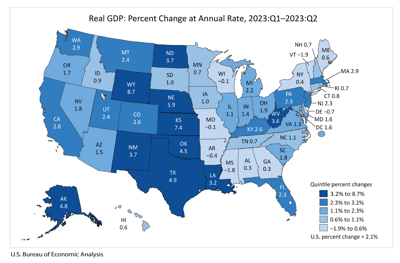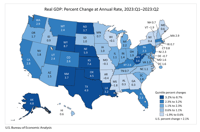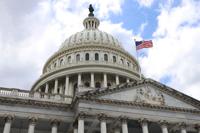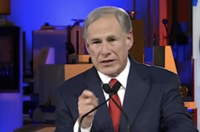(The Center Square) – The Texas economy expanded faster than the national economy for four consecutive quarters, according to new data released by the U.S. Bureau of Economic Analysis.
Second quarter 2023 real Gross Domestic Product – the value of all goods and services produced – grew in Texas at an annual rate of 4.9%. This is more than double the national growth rate of 2.1%.
Texas Gov. Greg Abbott lauded the report’s findings, saying, “Texas’ continuing economic expansion, well ahead of the United States as a whole for the fourth quarter in a row, is further proof that when given the freedom to aspire, businesses invest and people prosper.”
Abbott also praised workers for contributing to Texas’ economic success, saying, “Opportunity knows no bounds in Texas thanks to the hardworking men and women of this great state.”
The findings come after the U.S. Bureau of Labor data showed that Texas again led the U.S. in job creation in October, as it has every month for over two years. Texas also broke its own monthly employment records as it has in previous consecutive months.
This year, Texas won numerous awards for its top economic and business climate. Texas ranked first in the U.S. for having the best business climate by Site Selection Magazine and won the magazine’s Governor’s Cup award for total capital investment projects in 2022.
In March, Texas won the magazine’s Governor’s Cup for a record 11th consecutive year for having the most job-creating business relocations and expansions in the country.
In April, Texas won the top slot again ranking as the “Best State for Business” by leading U.S. CEOs for a record-breaking 19 years in a row by Chief Executive Magazine.
In June, Business Facilities Magazine named Texas as the state with the Best Business Climate in its 19th Annual Rankings Report.
In September, Texas was named the best business climate in the U.S. in Development Counsellors International’s triennial survey. Texas has frequently held the top ranking of this survey since it began in 1996.
Factors included in these rankings include the number of relocations and expansions; corporate or personal income tax climate (Texas has neither); a growing, skilled, diverse workforce; infrastructure; startup ecosystem and other factors.
According to a recent Federal Reserve Bank of Dallas report, “Lore and data have historically suggested that Texas is unlike any other place. Over the past 40 years, change has swept the state. Texas' employment composition has increasingly come to resemble the entirety of the U.S., more so than even California or New York. But Texas economic output is another story. While dwindling oil production in the 1980s and 90s initially pushed the sources of output to converge with the composition of national gross domestic product, the shale oil boom reversed that trend.
“Bottom line: Texas remains unique. If Texas, an energy powerhouse, were a country, it would rank third globally in crude oil and in natural gas production. Also dominant in downstream energy, Texas produces 30 percent of the nation’s gasoline and 75 percent of its petrochemicals. Texas also rules renewables. It is No. 1 in wind energy and ranks second in utility-scale solar.”
The Texas oil and natural gas industry continued to lead the U.S. in energy production. U.S. petroleum product exports set a new record in the first half of 2023, led by Texas, according to U.S. Energy Information Association data. The U.S. also exported more natural gas in the first six months of 2023 than in any other previous six-month period, led by the Gulf states of Texas and Louisiana, according to EIA data.
Texas and its ports, combined, also lead the U.S. for foreign trade impact, according to a recent Site Selection Magazine analysis.
Production of oil, natural gas, and natural gas liquids reached new record highs this fall after surpassing 30- to 40-year records broken over the summer, according to Texas Oil & Gas Association data.
“The state’s population is distinctive, too. It’s younger and has a higher Hispanic share than all but one other state,” the Dallas Fed report notes.
Texas cities are the fastest growing among the largest cities in the United States, according to census data. From 2000 to 2022, Texas gained over 9 million residents, more than any other state, representing a 43% increase.
The state’s largest county of Harris has the second-largest Black population and second-largest Hispanic population of all counties in the U.S.
Hispanics surpassed non-Hispanic whites last year, comprising 40.2% of the population compared to 39.8% non-Hispanic white Texans, according to the data.









